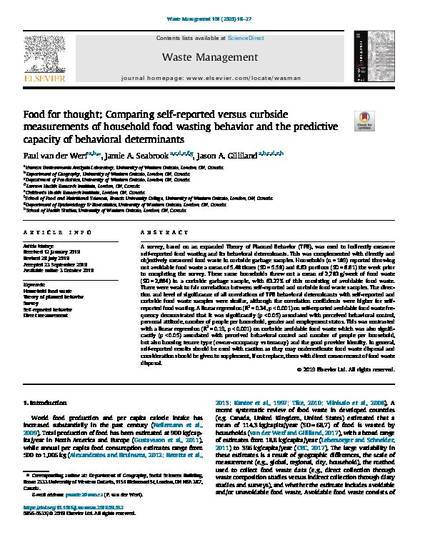
A survey, based on an expanded Theory of Planned Behavior (TPB), was used to indirectly measure self-reported food wasting and its behavioral determinants. This was complemented with directly and objectively measured food waste in curbside garbage samples. Households (n = 189) reported throwing out avoidable food waste a mean of 5.48 times (SD = 5.58) and 6.63 portions (SD = 6.61) the week prior to completing the survey. These same households threw out a mean of 2,783 g/week of food waste (SD = 2,664) in a curbside garbage sample, with 63.27% of this consisting of avoidable food waste. There were weak to fair correlations between self-reported and curbside food waste samples. The direction and level of significance of all correlations of TPB behavioral determinants with self-reported and curbside food waste samples were similar, although the correlation coefficients were higher for self-reported food wasting. A linear regression (R2 = 0.34, p < 0.001) on self-reported avoidable food waste frequency demonstrated that it was significantly (p < 0.05) associated with perceived behavioral control, personal attitude, number of people per household, gender and employment status. This was contrasted with a linear regression (R2 = 0.19, p < 0.001) on curbside avoidable food waste which was also significantly (p < 0.05) associated with perceived behavioral control and number of people per household, but also housing tenure type (owner-occupancy vs tenancy) and the good provider identity. In general, self-reported results should be used with caution as they may underestimate food waste disposal and consideration should be given to supplement, if not replace, them with direct measurement of food waste disposal.
Available at: http://works.bepress.com/jason-gilliland/76/

Also available open access in Waste Management at: https://doi.org/10.1016/j.wasman.2019.09.032